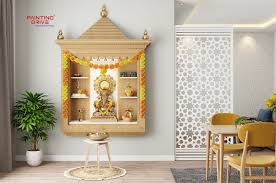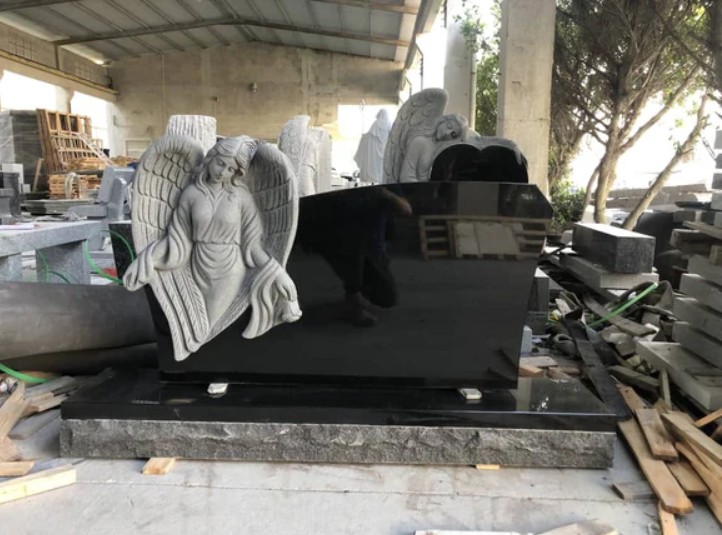InIn Indian homes, the pooja room holds immense significance, serving as a dedicated space for worship and spiritual reflection. However, in the context of urban living, especially in apartments where space is limited, designing a small pooja room can be a challenging yet rewarding endeavor. This article delves into innovative small pooja room designs that maximize utility and aesthetics while ensuring a tranquil atmosphere for prayer and meditation.
1. Understanding the Importance of a Pooja Room
A pooja room is not merely a physical space; it is a sacred area where families connect with their spirituality and traditions. In an apartment setting, it becomes even more essential to create a pooja room that respects cultural practices while fitting seamlessly into the home’s overall design.
2. Key Considerations for Designing a Small Pooja Room
2.1. Space Utilization
In small apartments, space optimization is crucial. Consider utilizing corners or nooks that might otherwise remain unused. Wall-mounted shelves can help you create vertical space without taking up floor area.
2.2. Ventilation and Lighting
Proper ventilation and lighting are essential for a pooja room. Ensure that the space receives adequate natural light during the day, and consider installing soft lighting options like LED strips or sconces for the evening.
2.3. Material Selection
The choice of materials can greatly influence the ambiance of the pooja room. Natural materials like wood, stone, and marble evoke a sense of tranquility and spirituality.
2.4. Personalization
Incorporate elements that reflect your family’s traditions and beliefs. Personal touches, such as family photos, sacred texts, or traditional artifacts, can enhance the connection to the space.
3. Design Ideas for Small Pooja Rooms
3.1. Wall-Mounted Pooja Units
For apartments with limited floor space, wall-mounted pooja units can be a game-changer. These units can be designed with:
- Shelves: For placing idols and spiritual items.
- Lighting: Integrated LED lighting that illuminates the area beautifully.
- Decorative Panels: Customized backdrops made of wood or MDF with intricate carvings can add a traditional touch.
Example: A simple wall-mounted unit with a wooden backdrop and soft white lights can create a serene atmosphere.
3.2. Niche Pooja Rooms
If your apartment has a recess or niche, consider converting it into a pooja area. You can enhance the space with:
- Custom Cabinetry: Built-in cabinets can hold pooja essentials and provide a clutter-free environment.
- Decorative Doors: Folding doors or glass panels can separate the pooja area from the rest of the room while adding an element of elegance.
Example: A niche with a sliding glass door can keep the space discreet yet accessible, creating an inviting atmosphere.
3.3. Modular Pooja Cabinets
Modular cabinets offer flexibility and can adapt to your changing needs. Features may include:
- Adjustable Shelves: To accommodate different idols and religious items.
- Drawers: For storing pooja materials like incense sticks, flowers, and prayer books.
- Foldable Designs: Some cabinets can be folded away when not in use, freeing up space.
Example: A sleek modular cabinet in white with gold accents can blend seamlessly with modern apartment interiors.
3.4. Compact Pooja Tables
A compact pooja table can serve as a focal point in the room. Consider:
- Materials: Use durable and aesthetically pleasing materials like solid wood or stone.
- Design Elements: Include carved motifs or minimalistic designs that complement the overall décor.
Example: A small teak wood table with carved legs can enhance the traditional feel of the pooja room.
4. Color Schemes for Small Pooja Rooms
Choosing the right color scheme is crucial in creating a peaceful environment. Here are some suggestions:
4.1. Warm Neutrals
Colors like beige, cream, and light browns create a calming effect, promoting a sense of peace and spirituality.
4.2. Pastel Shades
Soft pastel shades, such as pale pink, lavender, or mint green, can brighten the space while maintaining a tranquil ambiance.
4.3. Rich Jewel Tones
If you want to create a more vibrant atmosphere, consider deep jewel tones like emerald green, royal blue, or burgundy. These colors can make the space feel rich and inviting.
Example: A pastel-colored pooja room with soft lighting can create a serene and inviting space for worship.
5. Decorative Elements to Enhance the Pooja Room
5.1. Idols and Murti
The idols or murtis you choose for your pooja room should resonate with your family’s beliefs. Select materials and designs that reflect your spirituality.
5.2. Art and Wall Hangings
Adding art pieces or wall hangings depicting religious symbols or figures can enhance the aesthetic appeal. Consider using canvas prints or traditional wall art.
Example: A painting of a deity framed in traditional motifs can become a stunning focal point.
5.3. Natural Elements
Incorporating plants can bring life into the pooja room. Consider:
- Potted Plants: Small indoor plants can improve air quality and add a touch of nature.
- Fresh Flowers: A small vase of fresh flowers can enhance the spiritual atmosphere.
Example: Placing a small indoor plant next to the pooja table can create a refreshing and serene environment.
6. Lighting Solutions for Small Pooja Rooms
Proper lighting is key to creating a peaceful ambiance. Here are some ideas:
6.1. Natural Light
If possible, position the pooja room near a window to take advantage of natural light during the day.
6.2. Soft Ambient Lighting
Install soft ambient lighting such as:
- Recessed Lighting: These can be embedded in the ceiling to provide a subtle glow.
- Wall Sconces: Beautifully designed wall sconces can enhance the atmosphere while saving space.
6.3. Accent Lighting
Consider adding accent lighting to highlight specific features, such as:
- Under-Shelf Lights: Illuminating the space under the shelves can create a warm glow.
- LED Strip Lights: These can be placed around the edges of the pooja table for a modern touch.
7. Maintaining the Pooja Room
7.1. Regular Cleaning
Keep the pooja room clean and organized. Dust the idols and surfaces regularly and ensure that the area remains clutter-free.
7.2. Symbolic Practices
Incorporate regular rituals, such as lighting a diya or offering fresh flowers, to maintain the sanctity of the space.
7.3. Seasonal Decor
Changing decor according to festivals or seasons can keep the space vibrant. Use colorful decorations for festivals like Diwali or Navratri.
8. Integrating Technology
In today’s modern world, integrating technology into your pooja room can enhance the experience. Consider:
- Smart Lighting: Use smart bulbs that can change colors and dim to create different moods.
- Music Systems: A small Bluetooth speaker can allow you to play devotional music or chants during prayers.
Example: A pooja room with adjustable smart lighting can create the perfect ambiance for any occasion.
Conclusion
Designing a small pooja room in an apartment presents unique challenges but also offers exciting opportunities for creativity and personalization. By focusing on space utilization, material selection, and decorative elements, you can create a serene and inviting sacred space that honors your traditions and beliefs. Whether you opt for a minimalist approach or a more vibrant design, the right pooja room can become a cherished sanctuary for reflection, prayer, and spiritual connection within your home.
Final Thoughts
Remember, the essence of a pooja room lies not only in its design but also in the intention behind it. As you create your sacred space, infuse it with love, devotion, and positivity. A thoughtfully designed pooja room can enhance your spiritual journey and bring peace and harmony to your home. Embrace the process, and let your pooja room reflect the beauty of your faith and the warmth of your traditions.



